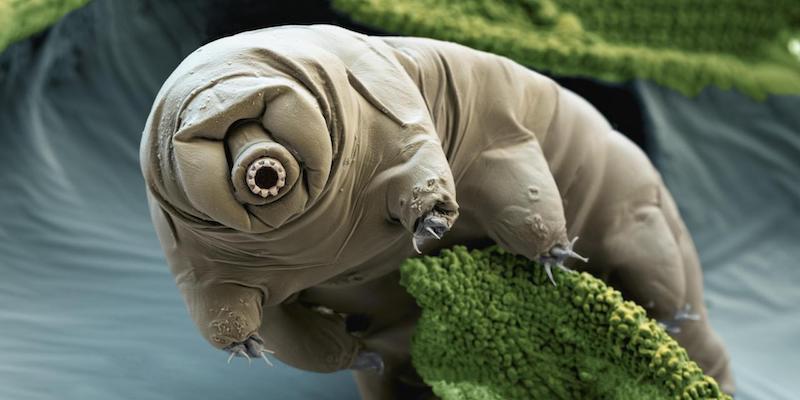 Tardigrade. Source: BBC
Tardigrade. Source: BBC
July 14, 2017 (Phys.org) -- The world's most indestructible species, the tardigrade, an eight-legged micro-animal, also known as the water bear, will survive until the Sun dies, according to a new Oxford University collaboration.
The new study published in Scientific Reports, has shown that the tiny creatures, will survive the risk of extinction from all astrophysical catastrophes, and be around for at least 10 billion years -- far longer than the human race.
Although much attention has been given to the cataclysmic impact that an astrophysical event would have on human life, very little has been published around what it would take to kill the tardigrade, and wipe out life on this planet.
The research implies that life on Earth in general, will extend as long as the Sun keeps shining. It also reveals that once life emerges, it is surprisingly resilient and difficult to destroy, opening the possibility of life on other planets.
Tardigrades are the toughest, most resilient form of life on earth, able to survive for up to 30 years without food or water, and endure temperature extremes of up to 150 degrees Celsius, the deep sea and even the frozen vacuum of space. The water-dwelling micro animal can live for up to 60 years, and grow to a maximum size of 0.5mm, best seen under a microscope. Researchers from the Universities of Oxford and Harvard, have found that these life forms will likely survive all astrophysical calamities, such as an asteroid, since they will never be strong enough to boil off the world's oceans.
Three potential events were considered as part of their research, including; large asteroid impact, and exploding stars in the form of supernovae or gamma ray bursts.
(more)
READ MORE: Phys.org











